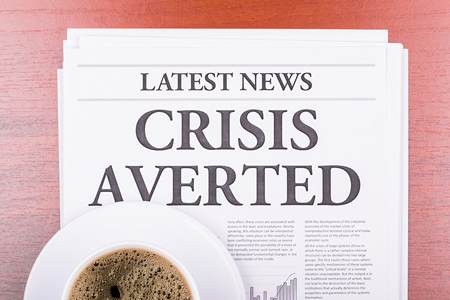Lessons from communicating about a deadly disease
The Ebola crisis is nothing to joke about or make light of. We all wish for this disease to go away and never return. As with any crisis, there are two battles being fought: 1) on the ground, with frontline people working to keep the disease from spreading and 2) via the news stream, with communications teams trying to keep misinformation from spreading.
It is interesting to watch how these communications may be helping or hurting efforts to stop the disease from spreading. Is the reporting responsible? Is the news media offering a public service by making sure people know and understand the symptoms and the actual risk of contracting Ebola, or are they creating panic and fear? What do you tell people? How often? How much? In what manner? Are you violating privacy, security, slander & libel laws? Are you withholding information that would make a difference in the safety of the public? Who will be the spokesperson?
The World Health Organization, the hospitals in Texas and New York all have crisis communications plans that have gone into effect in light of the Ebola outbreak and the subsequent events we’ve all heard about on the news. I worked for a hospital system for 10 years, and it was part of our JCAHO Accreditation process to have such a plan. We couldn’t even stay open without one. That’s how important it is.
All organizations are susceptible to a crisis of some sort. It’s unlikely to be a deadly disease…but embezzlement, fraud, white collar crime, sexual harassment, labor disputes are very common crises. Having a crisis communications plan in place in hopes that you never have to use it is like having liability or property & casualty insurance.
Here are some basic elements of a plan:
1. Phone tree: What are the phone numbers you will need to find and call in the middle of the night? Who will be in charge of making those calls?
2. Command center: Where will you be operating from for communications? Who will be in charge?
3. Team: Who will be on the team? What will their roles be?
4. Protocols: Based on your industry and/or laws and regulations, what are the protocols for communications? Where will you get your official information from? What can you legally say?
5. News conferences/releases/statements: Who will draft these? Coordinate? Where will you hold news conferences? How often will you communicate or release information?
6. Spokespersons: Who will be the designated spokesperson?
7. Media calls: Who will field these? Who will be designated to respond?
8. Logging/tracking/monitoring: Who will log all media calls and responses? Who will handle monitoring coverage (news media AND social media)?
9. Internal communications: What will you tell employees? When and how will you tell them?
10. Customer/client communications: What will you tell customers/clients? When and how will you tell them?
11. Timelines: What is the plan for the first 24 hours? The first 48? After 5 days? After 7?
12. Follow-up/debrief: What is your plan to follow-up with crisis staff, customers, clients, the public, elected officials, after the initial crisis is over?
It may seem overwhelming to put this kind of a plan in place, but you will be grateful you did.


